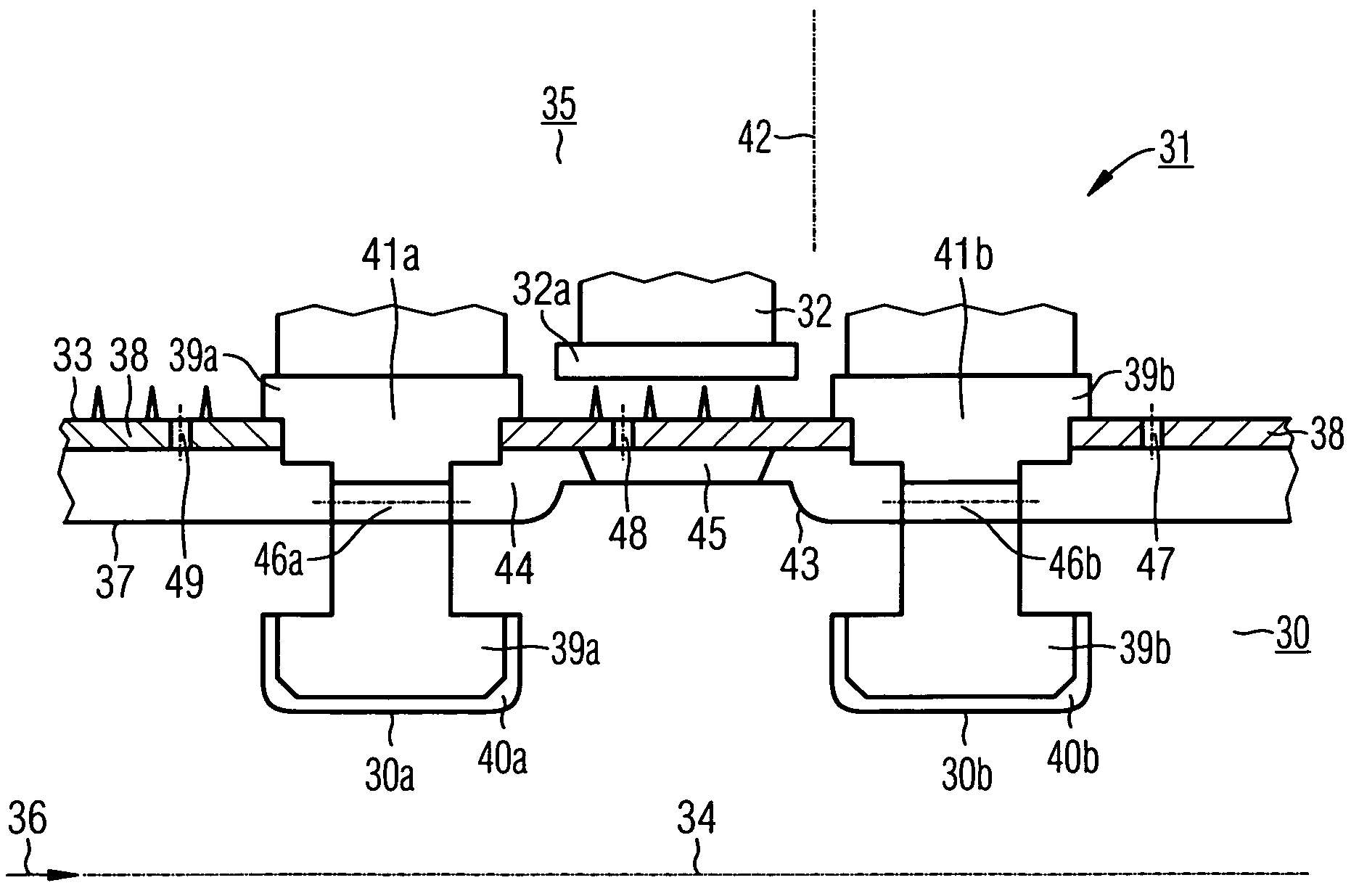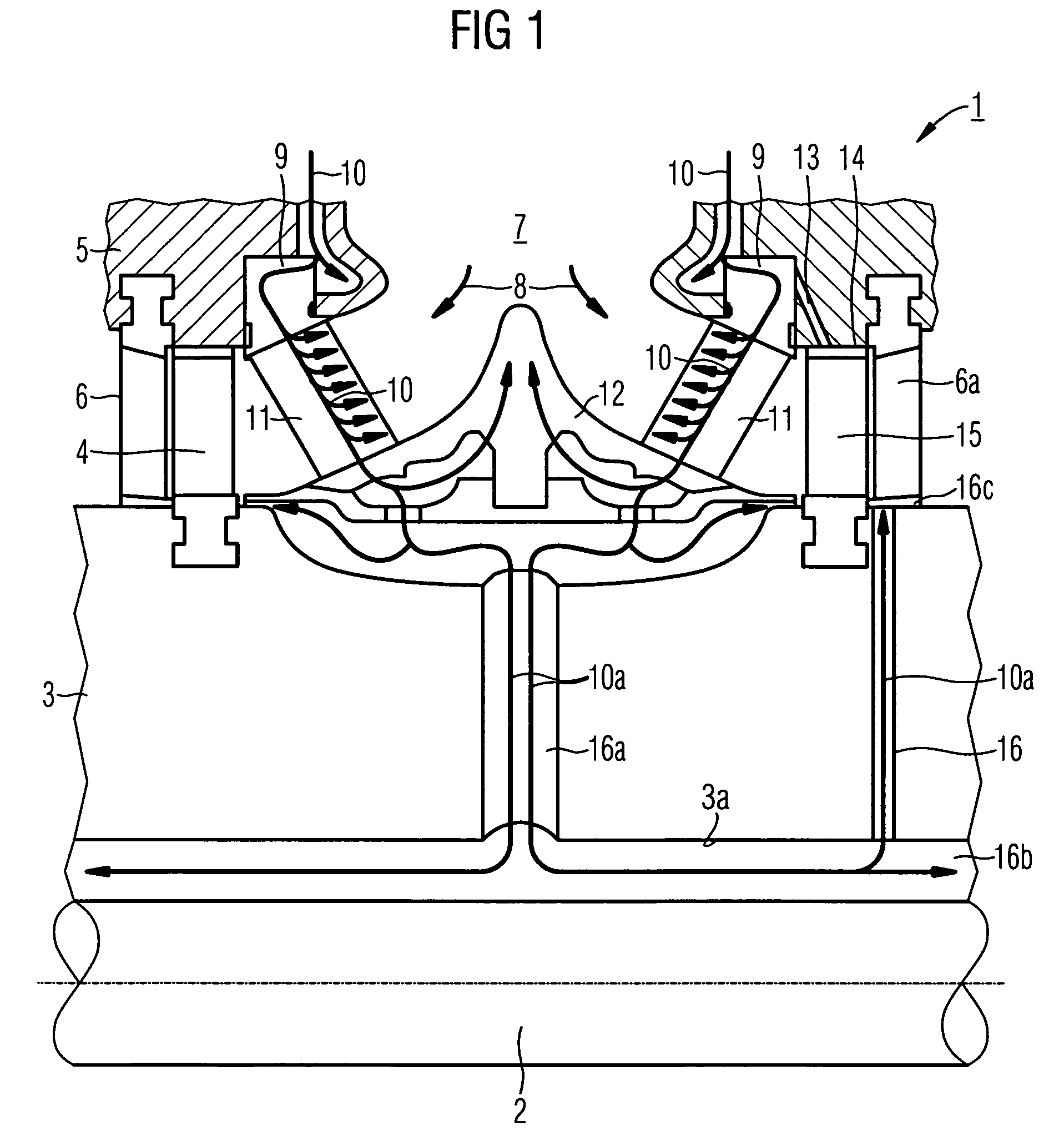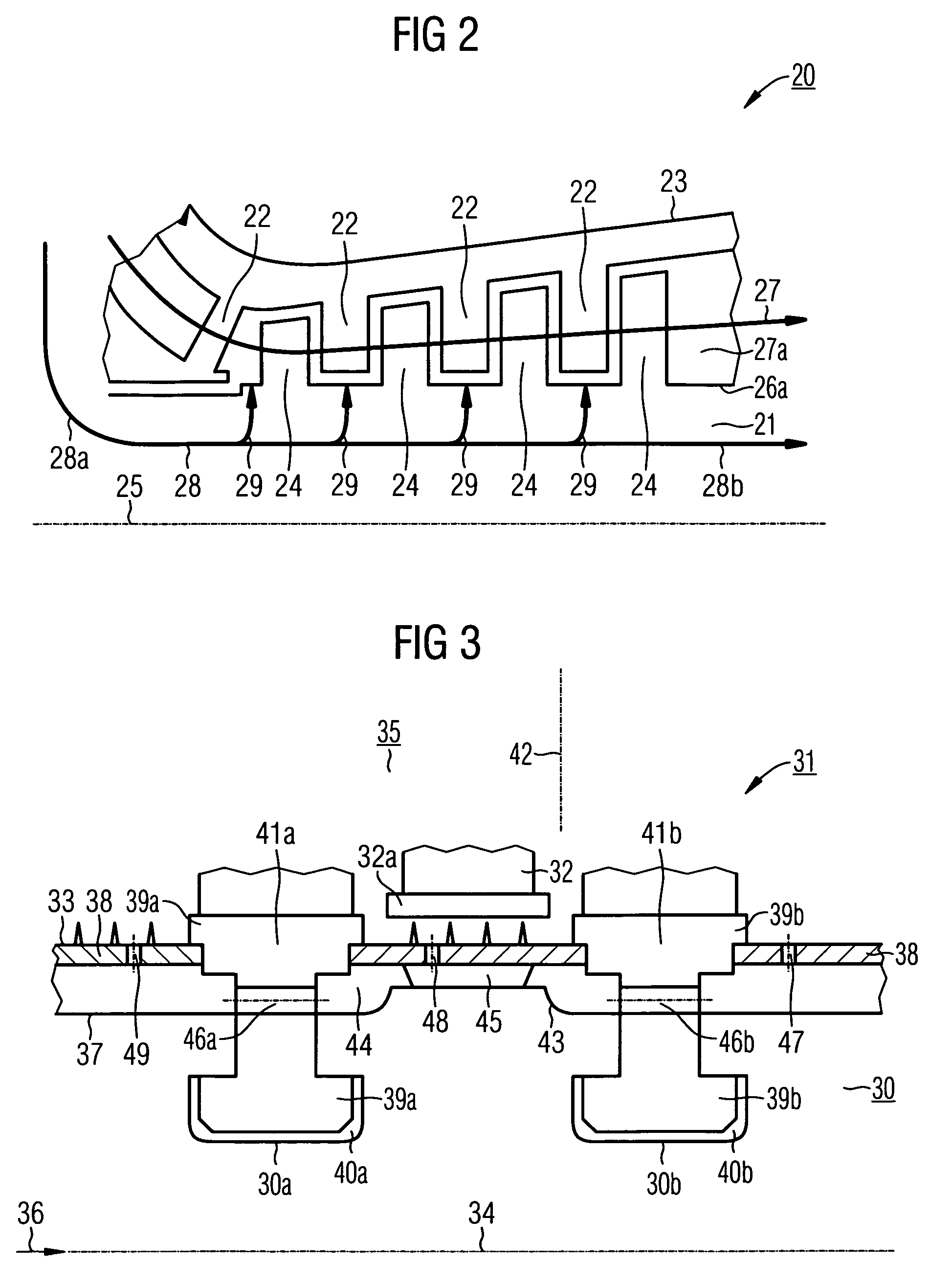Steam turbine rotor, steam turbine and method for actively cooling a steam turbine rotor and use of active cooling
a technology of active cooling and steam turbine, which is applied in the direction of machines/engines, stators, liquid fuel engines, etc., can solve the problems of high disadvantage of rotor strength, inability to realize open cooling systems, and inability to apply cooling measures, etc., to achieve large-scale feasibility, high efficiency, and high steam parameters
- Summary
- Abstract
- Description
- Claims
- Application Information
AI Technical Summary
Benefits of technology
Problems solved by technology
Method used
Image
Examples
Embodiment Construction
[0052]Known steam turbine rotors are fundamentally manufactured as solid, single-piece rotors, without any active cooling systems whatsoever. However, as illustrated in FIG. 1, the prior art in accordance with U.S. Pat. No. 6,102,654 has described a steam turbine 1 which has a cooling system which is restricted to cooling in the inflow region. This turbine has a rotor 3 arranged rotatably on an axle 2, with a number of rotor blades 4 arranged on its tubular shaft. These rotor blades are arranged in a stationary casing 5 with a set of guide vanes 6. The rotor 3 is driven by the working medium 8, which flows in in the inflow region 7, via the rotor blades 4. In addition to the working medium 8, a cooling medium 10 flows to the working medium 8 via a separate inlet region 9. The cooling medium 10 performs a cooling action only on a first ring 11 of the stationary guide vanes and a shielding plate 12 by flowing on to them. As a result, the thermal load on the rotor 3 and the first ring ...
PUM
 Login to View More
Login to View More Abstract
Description
Claims
Application Information
 Login to View More
Login to View More - R&D
- Intellectual Property
- Life Sciences
- Materials
- Tech Scout
- Unparalleled Data Quality
- Higher Quality Content
- 60% Fewer Hallucinations
Browse by: Latest US Patents, China's latest patents, Technical Efficacy Thesaurus, Application Domain, Technology Topic, Popular Technical Reports.
© 2025 PatSnap. All rights reserved.Legal|Privacy policy|Modern Slavery Act Transparency Statement|Sitemap|About US| Contact US: help@patsnap.com



